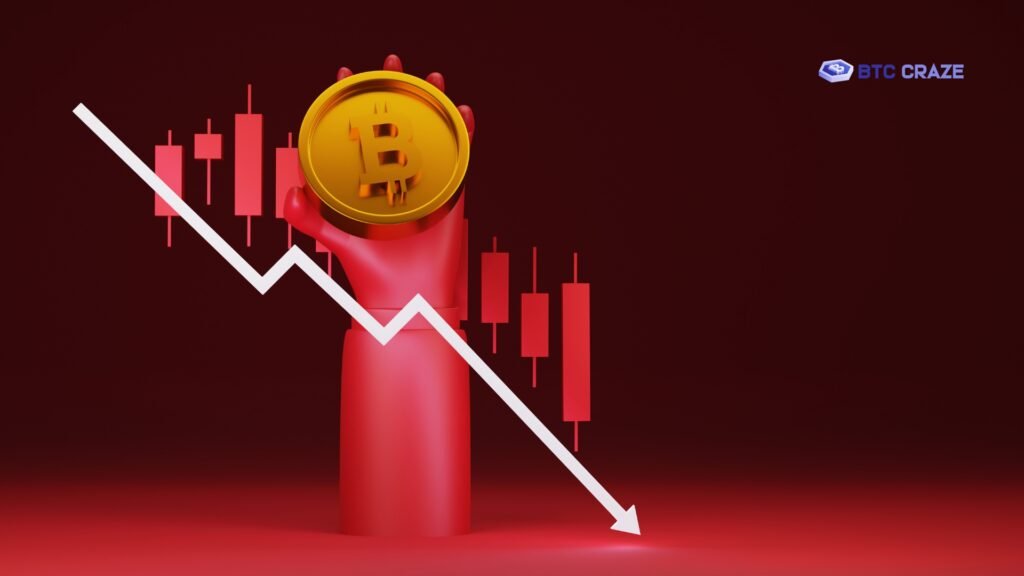There was a significant reduction in the Bitcoin Price Down Today on the market, as the price of BTC dropped from $63,446 to $60,763 in just a few hours, representing a decrease of 4.3% in the previous twenty-four hours. Additionally, since reaching a high of $70,000, the price of Bitcoin has dropped by fifteen percent over the past month. Several factors that affect the United States economy and investors’ sentiment are connected to this precipitous decrease.
Various Reasons Why Bitcoin Falling
U.S. Economic Indicators
The recent U.S. inflation and consumer sentiment statistics significantly influenced iBitcoin’s decline. According to the University of Michigan, consumer sentiment fell short of market forecasts in May, from 77.2 in April to 67.4, the lowest level in six months. Inflation forecasts for the coming year also surged to 3.5%, the highest level in six months, adding to economic worries.
Caution From the Fed Reserve
Remarks made by Federal Reserve officials exacerbated market volatility. According to Fed Lorie Logan, a rate drop would be hasty, who warned of inflationary pressures and stressed the importance of policy flexibility. Similarly, Bowman, the head of the Federal Reserve, stressed the need to preserve policy stability for the long haul.
Outflows from U.S.S. Spot Bitcoin ETFU.S.S. Spot Bitcoin ETF outflows surpassed $100 million on Friday, along with economic indications. One such ETF is the Grayscale Bitcoin Trust (GBTC). This shift shows that investors are cautious because of the economy’s unpredictability.
$50 M Liquidations
Significant liquidations occurred in the broader cryptocurrency market, with more than $156 million within a day. There were around $25 million in short holdings and $131 million in long bets. A rapid and significant change in mood was evident in the market as more than $50 million was liquidated in one hour.
Bitcoin Price Correction Ahead: $52k
Michael van de Poppe, a well-known expert on cryptocurrencies, has also pointed out that Bitcoin is currently in its last accumulation period. This phase is characterized by periods of low volatility and jagged price changes, indicative of a pivotal turning point in Bitcoin’s price trajectory. According to van de Poppe, Bitcoin is reportedly retracing its steps towards a crucial support level. Bitcoin might have a more severe fall if this level is not maintained, potentially returning to the $52,000 to $55,000 zone.
Recent Events Affecting Bitcoin’s Price

Elon Musk’s Tweets
Tweets from Tesla and SpaceX C.E.O. Elon Musk have been known to affect the value of cryptocurrencies. The price of Bitcoin has dropped recently, in part because Musk has voiced his worries about the cryptocurrency’s effect on the environment.
China’s Crackdown on Cryptocurrency Mining
Due to China’s crackdown on mining operations, the cryptocurrency market has been thrown for a loop. Since most Bitcoin mining occurs in China, the crackdown has reduced mining activity, which has caused the price of Bitcoin to fall.
Market Manipulation
Large investors, known as “whales,” can manipulate the Bitcoin market. Smaller investors can be affected by coordinated buying and selling activities that cause prices to be artificially inflated or deflated.
What Next for Bitcoin?
Short-Term Outlook
Market players’ reactions to news and events can cause Bitcoin’s price to remain volatile shortly. Traders need to be prepared for unexpected price fluctuations and be cautious.
Long-Term Prospects
Bitcoin may have short-term ups and downs, but many experts are still optimistic about its future. Its price is likely to rise due to its restricted supply, increased institutional interest, and rising use as a store of value.
Psychological Factors in Bitcoin Price Fluctuations

Market Psychology
The price of Bitcoin is susceptible to the emotions of those involved in the market. Extreme price swings might occur due to illogical decision-making driven by strong emotions like greed and fear.
Herd Mentality
When markets are highly volatile, many investors follow the flow. When people act in unison, whether by selling or buying, in a panic, it can make price changes even more extreme.
Historical Price Patterns and Trends
Price Volatility Over Time
There have been moments of very high volatility and relatively stable eras in Bitcoin’s price history. Gaining a grasp of these patterns from the past might offer significant perspectives on the state of the market now.
Bull and Bear Markets
Since Bitcoin’s start, there have been several bull and bear markets. In a bull market, prices tend to rise for a long time, whereas in a bear market, they fall for a long time. Investors might study previous market cycles to foretell how prices will move in the future.
In Summary
Finally, many different and interrelated factors affect Bitcoin’s price. Investors can effectively negotiate the complexity of the cryptocurrency market with a thorough understanding of market dynamics and a long-term investment perspective, even though short-term price changes might be unnerving.
[sp_easyaccordion id=”5035″]

